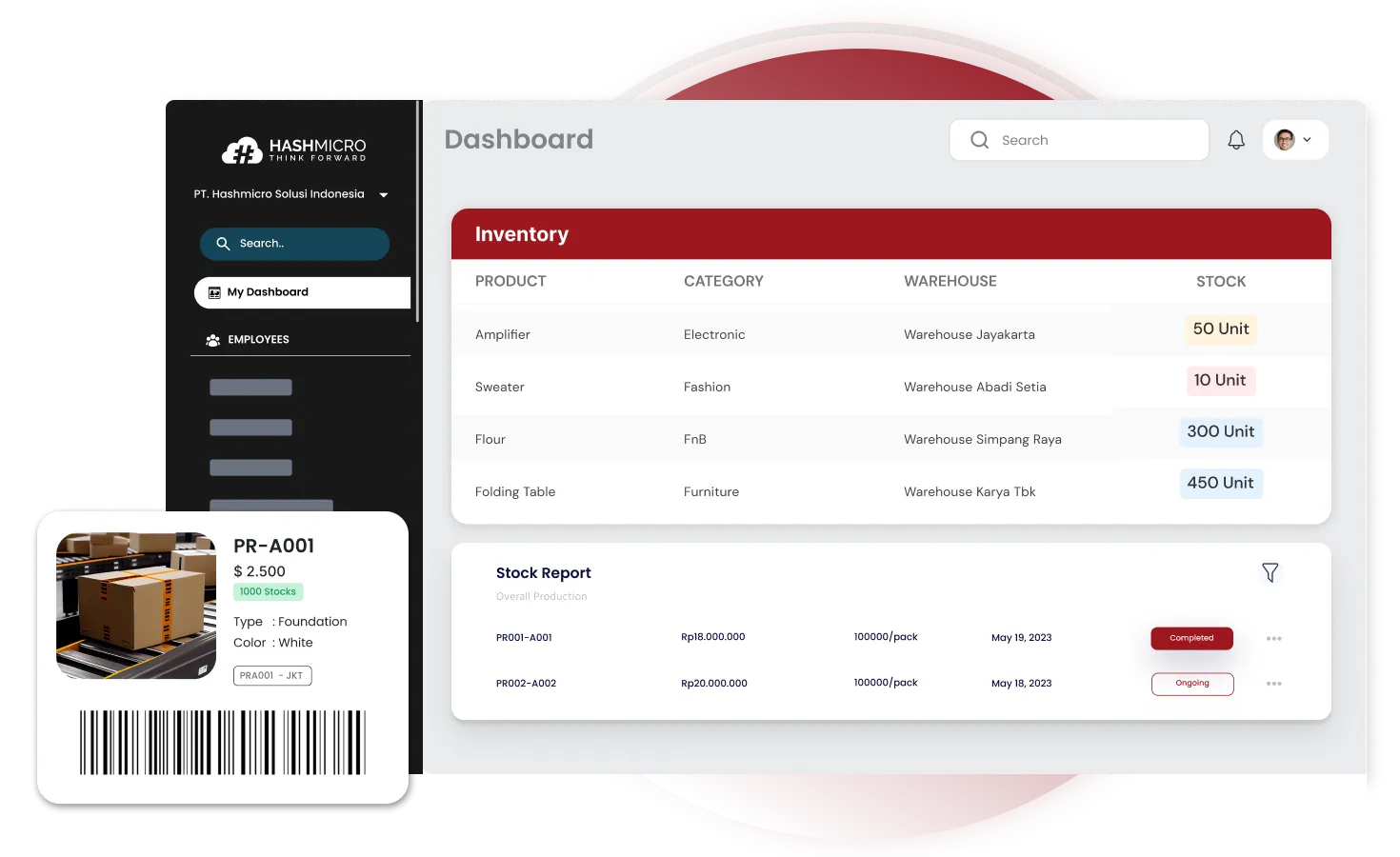Are you aware that as supply chains grow more complex, the risks of product tampering, counterfeiting, and logistical errors increase? These problems often stem from inconsistent labeling and supply chain practices, making it hard to maintain product integrity and operational efficiency.
Consequently, this complexity can lead to poor inventory management, higher costs, and dissatisfied customers. Without a standardized system for tracking and sharing product information, businesses struggle with accuracy and global collaboration.
Fortunately, GS1 barcodes provide a powerful solution. As the global standard, they ensure data accuracy, reduce errors, and enhance collaboration across the supply chain. By adopting GS1 standards, businesses can streamline operations, lower costs, and improve inventory management and customer satisfaction. This article explores the importance, benefits, and implementation of GS1 barcodes.
Key Takeaways |
Table of Content:
Table of Content
What is GS1?
GS1 is an internationally recognized non-profit organization that develops and maintains global standards for business communication, as mentioned before, GS1 enables organizations to uniquely identify, capture, and share information within the supply chain.
Founded in 1973 with the creation of the Universal Product Code (UPC), GS1 has since evolved into a global entity following the 2005 merger of the Uniform Code Council (UCC) and the European Article Numbering Association (EAN). Today, GS1’s barcodes are utilized by over a million companies worldwide, enhancing efficiency, accuracy, and interoperability across various industries.
Importance of GS1 Barcodes in Supply Chain Management
GS1 barcodes play a crucial role in supply chain management by ensuring consistency and accuracy in product identification, data capture, and communication. These standards offer numerous benefits and have a significant impact on your supply chain management, as displayed side by side in the table below. Let’s take a closer look at how they’re impacting your business.
| Benefits of GS1 Barcodes | Impact on Supply Chain Management |
| Improved business efficiency | Streamlined operations and minimized costs |
| Enhanced traceability | Improved visibility and reduced errors |
| Increased data accuracy | Reliable information exchange among trading partners |
| Better collaboration with global trading partners | Efficient supply chain coordination and improved customer satisfaction |
Types of GS1 Barcodes
Before implementing GS1 barcodes into your supply chain management, you need to be aware of the various types of GS1 barcodes, each designed for specific purposes and applications.
- GS1-128 Barcode: The GS1-128 barcode, also known as the Code 128 barcode, is widely used for shipping and logistic purposes. It can store a large amount of data, including product information and batch numbers. The GS1-128 barcode facilitates efficient inventory management, traceability, and supply chain automation.
- GTIN Barcode: The Global Trade Item Number (GTIN) barcode is used to uniquely identify products at various packaging levels. GTIN barcodes enable accurate product identification, enhance inventory control, and simplify point-of-sale transactions. They are widely used in retail and e-commerce industries.
- DataMatrix Barcode: The DataMatrix barcode is a two-dimensional barcode that can store a significant amount of data in a compact format. It is commonly used to encode product information, including serial numbers, batch numbers, and expiration dates. DataMatrix barcodes are often found on small-sized products or products with limited labeling space.
It’s important to note that each type of GS1 barcode has its own unique characteristics and benefits. You must understand the specific requirements of your business supply chain operations to determine the most suitable GS1 barcode for your products.
Benefits of GS1 Barcodes in Various Industries
With GS1 being applicable across diverse industries, empowering business owners to extend their global footprint, let’s explore the sectors where GS1 barcodes are frequently adopted and the associated benefits.
Retail
GS1 barcodes offer significant benefits to the retail industry. By implementing GS1 barcode standards, retailers can enjoy improved inventory management, reduced out-of-stock situations, enhanced product traceability, and efficient order fulfillment processes. These standards enable retailers to accurately track and monitor their inventory, ensuring that the right products are available at the right time. This not only improves customer satisfaction but also leads to cost savings for retailers.
Healthcare
In the healthcare sector, GS1 barcodes play a crucial role in ensuring patient safety and improving supply chain management. By adopting these standards, healthcare organizations can accurately identify and track medical devices and pharmaceuticals. This facilitates efficient product recalls, enhances visibility across the supply chain, and streamlines processes. The use of GS1 standards in healthcare helps prevent medication errors, improves patient outcomes, and ensures the authenticity and integrity of medical products.
Logistics
The logistics industry relies heavily on GS1 barcodes to optimize operations and enhance supply chain efficiency. These standards enable accurate tracking and tracing of shipments, providing real-time visibility and improving overall logistics management. GS1 standards also enhance warehouse operations by simplifying inventory management, streamlining order fulfillment, and promoting seamless collaboration among trading partners. Additionally, they facilitate efficient cross-border trade by ensuring consistent and reliable data exchange.
Food services
In the food services sector, GS1 barcodes have become indispensable for ensuring food traceability and safety. These standards help food service providers effectively manage allergen information, facilitate product recall management, and ensure compliance with regulatory requirements. By implementing GS1 standards, food service providers can enhance food safety, enable effective product labeling, and maintain consumer confidence in the supply chain. The use of GS1 standards also enables quick and accurate product identification, leading to improved operational efficiency and better inventory control.
Challenges and Solutions in Adopting GS1 Barcodes
Incorporating GS1 barcodes into your business processes and supply chain management can bring numerous benefits. However, it is essential to be aware of the challenges that may arise during the adoption phase. Overcoming these challenges requires careful planning, collaboration, and the implementation of best practices. Let’s explore some common challenges faced by businesses and the corresponding solutions:
Common challenges
- Limited resources: Implementing GS1 barcodes may require initial investments in training, technology upgrades, and process changes. Resource constraints can pose challenges, particularly for small and medium-sized enterprises.
- Lack of awareness: Many businesses may not be familiar with GS1 barcodes or their potential benefits. This lack of awareness can prevent the widespread adoption of these standards.
- Resistance from trading partners: Adopting GS1 barcodes often involves collaboration with trading partners and suppliers. Some partners may be resistant to change or unaware of the benefits, which can hinder the smooth integration of GS1 standards.
- Integration complexities: Integrating GS1 barcodes into existing systems and processes can be complex, especially in organizations with legacy systems or multiple technology platforms.
Solutions and best practices
To address these challenges, businesses can consider the following solutions and best practices:
- Proper planning: Develop a clear implementation plan that includes a timeline, resource allocation, and a communication strategy. This will help ensure a smooth transition to GS1 barcodes.
- Educate stakeholders: Conduct training sessions and workshops to raise awareness about GS1 barcodes among employees, trading partners, and suppliers. Highlight the benefits and address any concerns or misconceptions.
- Collaborate with industry associations: Engage with industry associations and forums to access resources, guidance, and best practices. These organizations can provide valuable insights and support during the adoption process.
- Seek guidance from experienced partners: Connect with businesses that have successfully implemented GS1 barcodes. Learn from their experiences, challenges, and best practices to avoid potential pitfalls.
- Conduct pilots and tests: Before implementing GS1 barcodes across the entire organization, conduct small-scale pilots and tests to assess their feasibility and impact. This approach allows for adjustments and refinements based on real-world scenarios.
- Leverage technology platforms: Explore technology solutions that can simplify the integration of GS1 barcodes and facilitate data exchange. Barcode scanning software, inventory management systems, and data capture tools can streamline processes and improve efficiency.
- Foster collaboration among stakeholders: Encourage open communication and collaboration among internal teams, trading partners, and suppliers. This collaboration will facilitate the smooth implementation of GS1 barcodes and help address any potential resistance or challenges.
By embracing these solutions and best practices, businesses can overcome the challenges associated with adopting GS1 barcodes. This will enable them to leverage the benefits of standardized communication, improved traceability, reduced errors, and enhanced collaboration within the supply chain.
How Inventory Management Software Helps with GS1 Implementation
As mentioned above, one of the solutions to confront the challenges of GS1 implementation is to use technology. Inventory management software is a critical component of the broader supply chain management system. It helps businesses manage the flow of goods from suppliers to end customers. But what can tech really help your business? Let’s break it down
- Automating Data Capture: Inventory management software can automatically capture data from GS1 barcodes using scanners or mobile devices. This automation reduces manual entry errors and speeds up the process of inventory tracking.
- Real-time Updates: With integrated GS1 barcodes, inventory management software can provide real-time updates on stock levels, product movements, and order statuses. This ensures that all inventory data is current and accurate.
- Seamless Integration: Modern inventory management systems can seamlessly integrate with other systems (e.g., ERP, WMS) and external partners using GS1 barcodes. This integration ensures a smooth flow of information across the entire supply chain.
- Compliance Management: The software helps businesses adhere to GS1 barcodes, ensuring compliance with industry regulations. It can also generate the necessary documentation and reports required for regulatory audits.
- Enhanced Customer Service: Accurate and efficient inventory management leads to better customer service. With precise stock levels and timely order fulfillment, businesses can meet customer demands more effectively.
If you’re interested in exploring HashMicro’s Inventory Management Software or looking to enhance your supply chain management with efficient ERP solutions, we invite you to download our pricing scheme by clicking the banner below.
Conclusion
In today’s complex supply chain landscape, GS1 barcodes stand out as a beacon of reliability and effectiveness. Embracing these internationally recognized standards enables businesses to tackle challenges related to product integrity and operational complexities, ensuring precise identification, tracking, and management of goods across the supply chain.
GS1 barcodes not only streamline operations, reduce errors, and foster better collaboration with trading partners, but also pave the way for heightened customer satisfaction and sustained growth in today’s dynamic marketplace.
To optimize integrated supply chain management, selecting the right inventory software that supports GS1 integration can be a game-changer. HashMicro’s inventory management systems present a compelling option. Integrated with barcode tracking software, this solution enhances efficiency, boosts visibility, fosters collaboration, ensures timely delivery, and optimizes sales forecasting and inventory control.
With HashMicro, efficiency isn’t merely a goal—it’s a tangible reality. Try the free demo now!
FAQ About GS1 Barcodes
-
What are the GS1 barcodes for?
GS1 standards enable global companies to identify, label, and exchange information across their value chains and commodity flows. Whether it’s product labeling, packaging, or logistics, GS1 provides the essential business language for enhancing efficiency and competitiveness.
-
Who uses GS1 barcodes?
Retailers, wholesalers, distributors, suppliers, and manufacturers depend on GS1 Standards to enhance business efficiency, maintain accurate product information, and reduce costs.
-
What is the difference between GTIN and GS1?
Indeed, a GS1 Company Prefix constitutes the initial segment of a barcode. To simplify, the Prefix uniquely identifies your company, while the GTIN (which includes part of the Prefix) serves as the online identifier for your product.
-
What is the old name for GS1?
On February 21, 2005, EAN International transformed into GS1, marking its transition into a truly global organization
-
Is GS1 mandatory?
Despite GS1 US being the sole authority, the GS1 system ensures globally unique item identifiers for trading partners. Consequently, retailers and marketplaces like Amazon mandate suppliers to acquire GS1 UPC barcodes





































